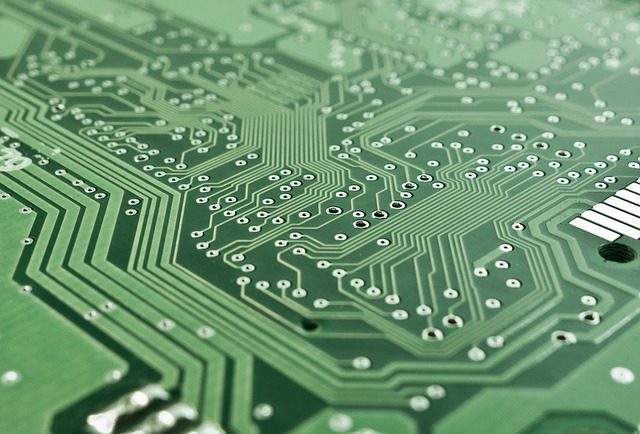Keeping up with conflict: weapons reviews and the laws of war

As the Geneva Conventions turn 70, the International Committee of the Red Cross (ICRC) is changing its guide to how new weapons are reviewed. Here’s why we need to pay attention.
After witnessing the Battle of Solferino in 1859, one of the bloodiest battles of the 19th century, the founder of the Red Cross wrote, ‘If the new and frightful weapons of destruction which are now at the disposal of the nations seem destined to abridge the duration of future wars, it appears likely, on the other hand, that future battles will only become more and more murderous.’
In his reflection, Henry Dunant was right on one count and wrong on another. In 2019, shortened conflicts are not the experience of the ICRC. At the same time, the emergence of new weapons due to rapid technological change urgently requires a humanitarian check. That check consists of barely five lines of text, forming Article 36 in the first additional protocol to the Geneva Conventions.
Article 36 obliges countries that are party to the protocol to assess the legality of new weapons, methods and means of warfare during development or acquisition. It seeks to prevent or reduce suffering by setting limits on warfare, whether using traditional, cyber, space or autonomous weapons. While many countries acknowledge their shared interest in assessing the legality of new weapons, the practical steps in conducting such reviews are less well known.
This is where the ICRC plays an active role, encouraging states to learn from each other on process and practice. In the light of rapidly developing weapons technologies, and with an update to the ICRC’s guide to legal reviews on the way, it’s time to revisit Article 36.
This crucial article limits the use of weapons that target indiscriminately or cause superfluous injury or unnecessary suffering. For this reason, it’s seen as a useful stopgap in ensuring compliance with the laws of war. It’s bolstered by other areas of that law stressing that conducting warfare is not without its limits. In particular, Article 36 obliges parties to the protocol to conduct legal reviews during the study, development, acquisition or adoption of new weapons. The review applies to weapons in the widest sense of the word, as well as to how they’re used.
The ICRC holds that the obligation to review is an ongoing one. Should a previously cleared weapon be modified in a way that affects its use, the review process would be triggered once more. These legal reviews seek to determine whether the weapon is already specifically prohibited by any binding treaty or by customary international law. If not, it still needs to be held up against a number of other bodies of law.
If the weapon isn’t covered by treaty law, the ICRC holds that it needs to be considered in the light of a rule known as the ‘Martens Clause’, which applies ‘principles of humanity’ and the ‘dictates of public conscience’ to the weapon in question. The scope of these reviews can require a significant amount of evidence to inform them, prompting further questions.
While Article 36 sets the obligation, it doesn’t lay down a practical path for conducting legal reviews of new weapons. This lack of detail poses challenges of legal interpretation, but also of policy. Who should be responsible for the review? Who should participate? When will legal reviews occur? How will decisions be made and records kept? These practical questions are compounded by challenges arising from the environment in which the reviews operate.
Rapid technological change is the clear example that underscores Article 36’s importance and challenges countries to keep up with new weapon capacities. But, as weapons become more sophisticated, the process of reviewing them becomes more complex—and more expensive. Finding the evidence required for reviews (technical description, performance, health and environmental effects) can be resource intensive. Fewer than 20 countries worldwide are known to conduct legal reviews of new weapons. In the Asia–Pacific region, only Australia and New Zealand are on the record as doing so.
But considering what all these practical challenges amount to also provides the greatest incentive for countries to work together. Legal reviews are international obligations with the onus on individual countries to comply. They may vary in format or method from country to country, but cooperation and information sharing can render them less costly in resources and more effective in outcome. The ICRC is updating its guide to legal reviews to acknowledge these hurdles and to advance the conversation in lockstep with them.
The discussion should focus on both the need for legal reviews of new weapons and the practical path towards them. The global community has come together for such conversations before. The role of the ICRC in this space is to facilitate information sharing and to provide support and advice on weapons reviews. Its original 2006 legal review guide proposed types of weapons to include and empirical data and legal frameworks to consider, while recommending structures and formats.
In conversation with countries, the ICRC also identified a body of best practice. Reviews should start as early as possible. They should be multidisciplinary in terms of those involved, giving evidence and adjudicating. Military lawyers should receive technical training in the systems that they’re examining. Examining empirical evidence and the weapon’s intended use is critical.
In late 2018, the ICRC invited representatives from 13 countries for a three-day seminar in Australia dedicated to discussing Article 36 and the implications of new weapons. It provided an opportunity for countries in the region to learn from each other about emerging technologies and how to fulfil their obligations according to the laws of war.
The seminar was designed to get countries talking, encouraging more engagement with legal reviews and the challenges posed by new weapons. Ahead of the release of the ICRC’s updated guide to legal reviews, conversations like these aren’t a bad place to start.



